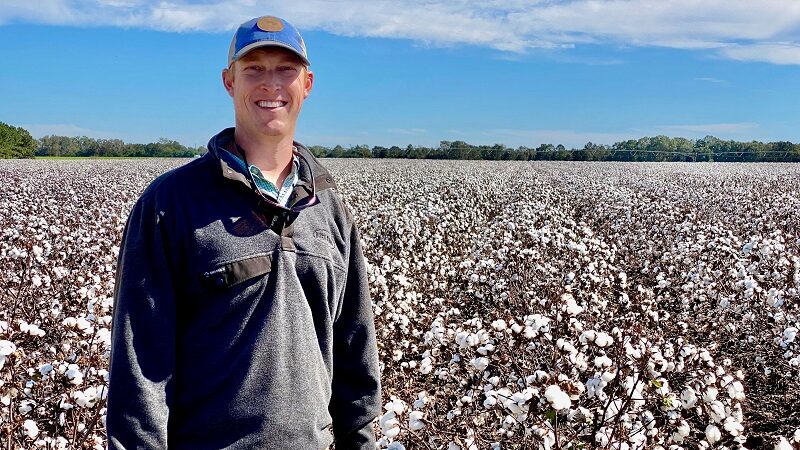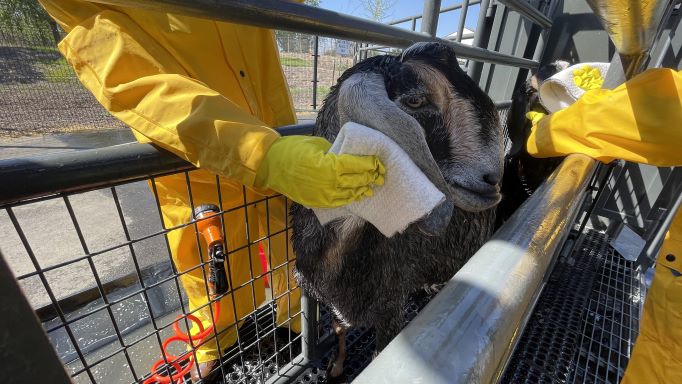Nonwoven Cotton Wipe Proven Innovation for Decontamination and Security
With heightened political tensions in some regions of the world, high-tech sectors like defense, personnel protection, and semiconductors are gaining due attention. Likewise, advanced textiles are finding applications such as decontamination wipes, body armor, medical textiles, wearables, and more.
Investment in science and technology to boost innovation and grow the economy is recognized as a high priority in the United States and United Kingdom amidst dire economic situations. The Chips Act in the United States and the recent Autumn Statement by the United Kingdom’s Chancellor of Exchequer reinforce the need.
First Line Technology (FLT) has been working to develop multiple applications for the nonwoven wipe FiberTect that can help contribute to global security.
FiberTect, which evolved out of research and development at Texas Tech University, is a platform technology based on its universality to wipe away different CBRN agents, as well as its use of different fibers such as cotton, polyester, and blends as absorbent layers, depending on the application and need.
“FiberTect was one of the first patented technologies out of Texas Tech University, and through industry partnership with First Line Technology and Hobbs Bonded Fibers, it has proven to be one of the most widely commercialized technologies from TTU over the past two decades,” stated Cameron Smith, Director of Commercialization for the TTU System.
FLT’s continued efforts are taking FiberTect to the next level, making it a universal wipe for chemical, biological, and radiological protection. Recent work by the U. S. Army has shown that FiberTect is able to efficiently wipe away toxic microbes such as bacterial spores just using the dry FiberTect wipe. This method is advocated for cold weather regions of the world such as Siachen glacier and other high-altitude regions where liquid freezing makes wet decontamination methods inefficient. This study also showed that the FiberTect dry wipe can decontaminate Bacillus atrophaeus var. globigii (BG) spores up to 94.93%.
This research proves the applicability of the FiberTect nonwoven wipe against biological toxins, in addition to its efficacy against chemical agents like mustard gas and fentanyl particles.
FLT demonstrating the use of FiberTect to wipe away toxins from the skin of an animal. (Photo: First Line Technology)
“FiberTect was originally developed for toxic liquid chemicals such as chemical warfare agents, but it has proven equally effective at the physical removal of fine powders like fentanyl and weaponized bio-agents,” stated Corey Collings, Director of Research and Development at FLT.
“There is a need to develop functional products that can sense and wipe away opioids and fentanyl products,” stated Dr. Vaclav Trojan of the International Clinical Research Center at Masaryk University, Czech Republic. “These products, although used in pain treatments, are regulated items that need good control, and hence there is a need to develop effective decontamination products such as wipes.”
Adsorbent and absorbent wipes like FiberTect can play a vital role in wiping away fine particles that contain fentanyl compounds, added Trojan.
The need for such high-tech wipes has been expressed by Dr. Jan Halamek, Director of the Institute for Forensic Science at Texas Tech University. “The United States is going through an unparalleled opioid crisis where fentanyl and its analogs represent the deadliest drug threat we have ever encountered,” he stated. “Highly porous and absorbent wipes like FiberTect can be used as a decontamination countermeasure for fentanyl, which gives forensic scientists a tool to detect and decontaminate illicit drugs.”
FLT is advocating a “Blot-Apply-Remove” method that uses dry FiberTect wipes to wipe away bulk toxic agents. A small amount of reactive agent is applied, followed by again wiping with FiberTect. “The highly absorptive nature of FiberTect makes it far superior to paper towels or other absorbents in this procedure,” stated Collings.
Translating research from laboratory to the marketplace is critical these days for national security, economic growth, and job creation. FiberTect is a good model for such an activity, showcasing public-private partnerships. Initial applied research was supported by the United States government, and the private sector picked up the technology after robust evaluation by a United States National Laboratory.
“Universities are critical to the technology commercialization process, providing not only foundational research but also translational research, directly impacting the commercial market and economy with new technologies,” stated Smith.











